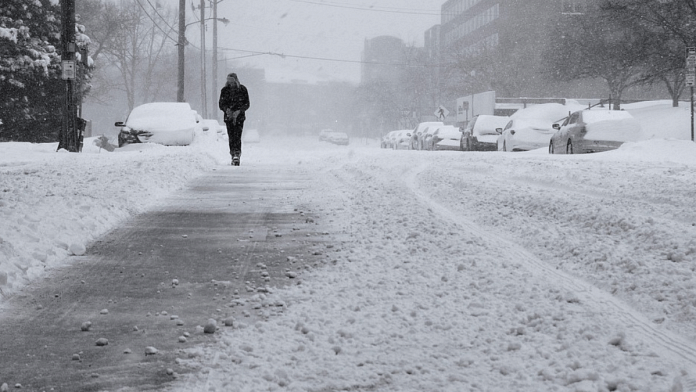“I hate the cold. I can handle being hungry but not being cold. I just hate the thought of people sitting freezing.”
Those are the words of Kenneth Gibson, who recently told his local newspaper why he’s joined thousands of other people across the UK in opening up ‘warm banks’. His is in St Mary Magdalene’s Church in Dundee, Scotland, where he is the rector, but warm banks have also launched in libraries, art galleries, community centres and other public venues.
What are warm banks?
Warm banks are spaces where people can go to heat up for free if they can’t afford to turn on the heating in their home this winter.
They have been organized by charities, councils and community groups across the UK to help people struggling with the surging cost of energy. Over 50% of councils in England and Wales are involved in setting up warm banks or supporting groups who are doing so.
Some businesses are helping too. One chef in North Yorkshire has opened up the rooms above his bakery for people to use, while a gaming cafe and “geek culture” store in Ipswich is also inviting in people who need to keep warm.
Warm banks operate on the same principle as food banks, which help people who can’t afford to feed themselves or their families.
More than 3,000 warm banks are listed on the website of the Warm Welcome Campaign, which is organizing community responses to the cost-of-living crisis. Its online map, pictured below, shows just how widespread the need for warm banks is this winter.
Kenneth Gibson’s warm bank will appear on an interactive online map that Dundee City Council is setting up so people can find their nearest one.
Birmingham, the UK’s second-biggest city, has a network of hundreds of warm banks opening up. “There was talk of eight, then 100 – now we think there will be hundreds,” Fred Rattley, a coordinator of the Birmingham Poverty Truth Commission, told a local news website.
London, Glasgow and Bristol are among the many other major UK cities with warm banks, and the hashtags #warmbanks and #warmhubs are being used widely on Twitter to help people find places to keep warm.
Why are warm banks needed this year?
The UK raised its energy price cap by 80% on 1 October. The energy price cap is the maximum rate a supplier can charge for their default tariffs.
The increase means the average gas and electricity bill for a UK household will jump to $4,228 (£3,549) a year from $2,349 (£1,971). The surge is largely a result of gas prices rising to record levels because of Russia’s war on Ukraine.
But higher energy costs aren’t the only extra financial burden facing households. Inflation as measured by the Consumer Prices Index is running at above 10%, meaning average weekly shopping bills are more expensive too.
Some people’s mortgage payments are also rising substantially because of repeated jumps in interest rates. And rental costs are rising at their highest rate on record, as landlords pass on increased mortgage payments.
Average household electricity prices in the EU have also increased sharply this year. Europe gets roughly 34% of its energy from gas, and Russia provided 40% of the EU’s gas imports before the war on Ukraine began.
Europe now has a plan to reduce its use of Russian gas, while the UK is looking to accelerate development of its domestic power resources, led by wind, new nuclear, solar and hydrogen.
What are the solutions to high energy bills?
In the short term, the UK’s Energy Bills Support Scheme is giving every household £400 off their energy costs between October 2022 and March 2023.
In the longer term, it says that shifting to domestic low-carbon energy will make electricity more affordable. The government claims that 95% of its electricity could be low carbon by 2030.
Making homes better at retaining heat is also a focus. The Mayor of London’s Warmer Homes scheme is offering grants of £5,000-25,000 to low-income London homeowners and private tenants to help them improve insulation and carry out draught-proofing.
People can also use the money to install heat pumps or solar panels. And the national government has a Help to Heat scheme, which offers funding to help people make their homes cheaper to heat.
Reducing heat loss from our homes can not only cut our energy bills, but it can also help in the fight against climate change. The World Economic Forum’s Accelerating the Decarbonization of Buildings report says that buildings account for up to 38% of global carbon emissions.
Working to reduce that number will not only help protect the planet, but will also be a step towards ensuring that fewer people need warm banks in future.
This article was originally published in the World Economic Forum.
Also read: Not bothered by the cold? The trick could be in your genes






